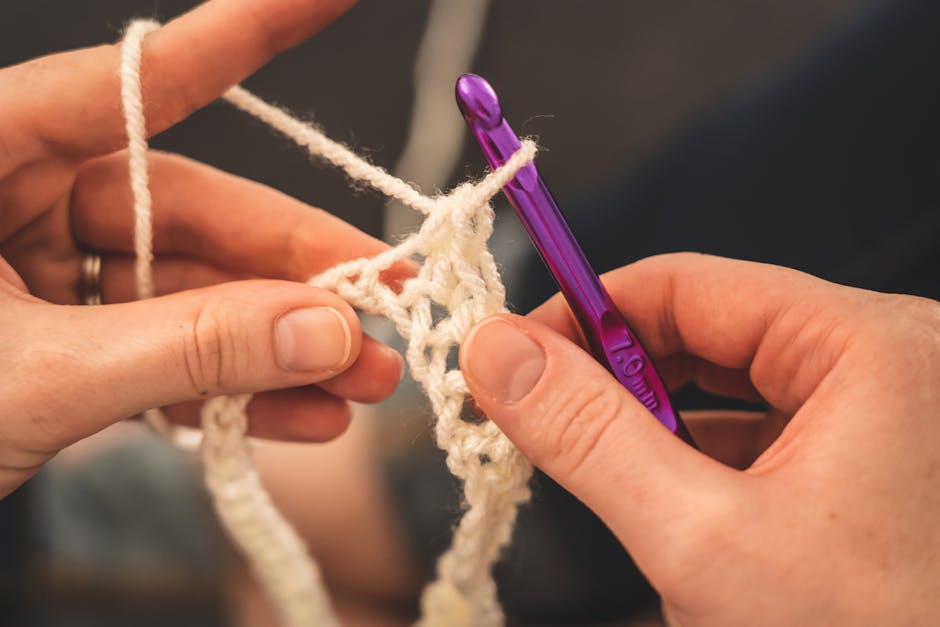Web UX/UI Design: Tips and Techniques
You’re about to uncover the secrets to crafting an unparallelled web experience, where users swoon over intuitive design, crisp aesthetics, and seamless functionality. You’ll discover the importance of crafting user personas, designing for inclusivity, and balancing aesthetics with functionality. You’ll master responsive web design, create engaging interactive elements, and navigate the world of information architecture. And when you think you’re done, you’ll realise that testing and iterating is just the beginning. Buckle up, because the best is yet to come – and you’re just a scroll away from accessing it all.
Key Takeaways
• Develop user personas to understand real people’s needs, desires, and frustrations, and validate design decisions with real data.• Ensure inclusivity by facilitating navigation, using high-contrast colours, optimising for screen readers, and creating responsive designs.• Establish a clear visual hierarchy, apply design principles like simplicity and clarity, and balance aesthetics with functionality.• Use micro-interactions, animations, and contextual responses to create a seamless, intuitive, and magical user experience.• Conduct user testing, gather feedback, and iterate on design to refine and improve the user experience.
Crafting User Personas Matters

When you’re designing a website, you’re not just building for the masses – you’re building for Rachel, the busy bee who needs to book a flight in under 5 minutes, and David, the tech-phobe who still uses Internet Explorer.
You’re building for real people with real needs, desires, and frustrations. That’s where user personas come in – to help you craft an experience that resonates with your target audience.
Crafting user personas matters because it forces you to put yourself in others’ shoes. You develop user empathy, understanding their pain points, goals, and behaviours.
It’s not about making assumptions or relying on gut feelings; it’s about validating your design decisions with real data. By creating personas, you’ll identify patterns and trends that inform your design, ensuring you’re solving the right problems for the right people.
Persona validation is key. You’re not just making stuff up; you’re backing your design with real user research.
It’s the difference between designing for a hypothetical ‘average user’ and designing for real people with unique characteristics. By doing so, you’ll create an experience that’s intuitive, user-friendly, and meets the needs of your target audience.
Designing for Accessibility Essentials

By designing for accessibility essentials, you’ll facilitate that everyone – yes, everyone – can navigate your site with ease.
You’ll create clear navigation paths, high contrast colours that pop, and screen reader optimisation that’ll make you the hero of the internet.
Clear Navigation Paths
Your website’s navigation is like a treasure map – it should elegantly guide users through your digital landscape, not leave them lost in a sea of confusion. Think of it as a clear, well-lit path that leads visitors to their desired treasure (aka your awesome content).
To create this navigational nirvana, follow these essential guidelines:
Establish a logical menu hierarchy: Organise your menu items in a logical, easy-to-follow structure. No one likes a messy, confusing menu that’s harder to navigate than a teenager’s emotions.
Use breadcrumb trails: Provide a clear path for users to follow, allowing them to easily backtrack and find their way around your site. It’s like leaving a trail of digital breadcrumbs, minus the risk of getting lost in the woods.
Make it responsive: Guaranty your navigation is optimised for various devices and screen sizes. You don’t want your users to feel like they’re trying to navigate a puzzle, do you?
High Contrast Colours
In a world where visual hierarchy is king, high contrast colours are the royal guard, protecting your users from the dreaded ‘squint-and-strain’ syndrome.
You know, that awkward moment when users squint their eyes, tilt their heads, and wonder what in the world you were thinking with that font colour on that background. Yeah, it’s a real thing, and high contrast colours are the solution.
By choosing colours that are far enough apart on the colour spectrum, you’re ensuring that your users can actually read what’s on the screen.
It’s not just about aesthetics; it’s about accessibility.
And let’s not forget about Colour Psychology – the right colour combos can evoke emotions and create brand recognition.
Think of Coca-Cola’s red and white or Facebook’s blue – those colours are synonymous with the brands themselves.
Screen Reader Optimisation
As you design for accessibility essentials, screen readers become your new BFFs, helping visually impaired users navigate your digital kingdom with ease. You’re not just creating a website; you’re crafting an inclusive experience that welcomes everyone. To make this happen, you need to optimise for screen readers.
Use Aria attributes: these magical tags help screen readers understand your website’s structure and content. By adding Aria attributes, you’re giving visually impaired users the keys to access your digital kingdom.
Make it voice command-friendly: with the rise of voice commands, make your website compatible with popular screen readers. This way, users can effortlessly navigate your site using voice commands.
Test with screen readers: don’t just assume your site is accessible – test it with popular screen readers like JAWS or NVDA. This will help you identify areas for improvement and guaranty a seamless experience for visually impaired users.
Balancing Aesthetics and Functionality

When it comes to crafting a seamless user experience, the age-old battle between aesthetics and functionality rears its head, begging the question: can you really have your cake and eat it too?
As a designer, you’re constantly torn between creating a visually stunning website that wows users, and a functional one that gets the job done efficiently.
But aesthetics and functionality aren’t mutually exclusive. In fact, they can (and should) complement each other beautifully.
The key is to strike a balance between the two. By establishing a clear Visual Hierarchy, you can guide users’ attention to the most important elements on the page, making it easier for them to navigate and find what they need.
Design Principles like simplicity, clarity, and consistency can also help you achieve this balance.
By applying these principles, you can create a design that’s both visually appealing and functional.
For instance, using a clean and minimalist design can make your website look sleek and modern, while also improving user experience by reducing cognitive load.
Mastering Responsive Web Design

You’ve nailed the balance between aesthetics and functionality, but now it’s time to guaranty your masterpiece looks and works beautifully on every device, because let’s face it, users won’t tolerate anything less. It’s time to master responsive web design, and we’re not just talking about making it look pretty on a desktop – we’re talking about creating an omniscient presence across all devices.
To achieve this, you’ll need to adopt a mobile-first approach. This means designing for smaller screens first and working your way up. It’s all about prioritising content and functionality, and then adding more complexity as screen size increases.
Three essential tips to help you master responsive web design:
-
Define your breakpoints: Identify the most common screen sizes and resolutions, and design specifically for those. Don’t try to be a hero and design for every possible screen size – it’s a lost cause.
-
Use flexible grids and images: Make sure your layout and images adapt to different screen sizes. This will confirm that your design looks cohesive and balanced, regardless of the device.
-
Test, test, test: Don’t just test on your favourite device – test on all devices. You never know how your design will render on that weird cousin’s old Android phone.
Creating Engaging Interactive Elements

As you craft your web design, you’re not just building a digital brochure – you’re creating an experience.
That’s where micro-interactions come in, adding a dash of magic to your UI.
Micro-Interactions Matter Here
Your users crave instant gratification, so it’s up to you to deliver micro-interactions that make their experience feel seamless, intuitive, and downright magical.
Think about it: when was the last time you used a website or app and thought, ‘Wow, this is so boring’? Yeah, didn’t think so. Micro-interactions are the secret sauce to making your users go from ‘meh’ to ‘wow’.
Delightful Surprises: Add some personality to your design with unexpected animations, sounds, or even a fun loading animation. It’s all about creating a sense of wonder and excitement.
Subtle Feedback: Give your users instant feedback when they interact with your design. This can be as simple as a button changing colour or a subtle animation when they hover over an element.
Contextual Responses: Make your design respond to your users’ actions in a way that feels natural and intuitive. For example, when they submit a form, show them a success message or a fun animation to let them know it’s been received.
Animations for Emphasis
One well-placed animation can make all the difference in transforming a bland interactive element into a mesmerising experience. You want to create an emotional connexion with your users, and animations can help you achieve that. But, let’s get real, you can’t just throw animations everywhere. You need to use them strategically to create a Motion Hierarchy. This means using animations to draw attention to the most important elements, and creating a visual flow that guides the user’s attention.
| Technique | Purpose |
|---|---|
| Visual Cueing | Directs user attention to important elements |
| Micro-Animations | Provides feedback on user interactions |
| Animated Segues | Enhances user experience by creating a sense of continuity |
| Animated Loaders | Reduces anxiety during loading times |
Navigating Information Architecture

Information architecture is the map that’ll keep you from getting lost in a sea of confusing menus and cryptic categorisations. It’s the ultimate treasure hunt, where the treasure is a seamless user experience.
Organising content in a way that makes sense to your users is a behemoth task. Site mapping is a visual representation of your site’s structure, helping you identify patterns and relationships between different pieces of content.
Three essential techniques to master when traversing information architecture are:
Content Clustering: Group similar content together to create a logical hierarchy, making it easier for users to find what they’re looking for.
Categorisation: Create clear and concise categories that resonate with your users’ mental models, avoiding ambiguity and confusion.
Card Sorting: Invite users to participate in a card sorting exercise, helping you understand how they categorise and prioritise content.
Testing and Iterating Your Design

Now that you’ve crafted a dazzling design, it’s time to put it through the wringer, confronting the harsh realities of user testing and iteration. This is where the rubber meets the road, and your design is either validated or brutally torn apart. Don’t worry, it’s a necessary evil – and a vital step in creating a user experience that truly rocks.
Design Sprints are an excellent way to get started with testing and iterating. These time-boxed sprints allow you to focus on a specific aspect of your design, gather feedback, and refine it – all within a short, intense period. Think of it as a design boot camp, where you’re forced to confront your design’s weaknesses and emerge victorious on the other side.
But testing and iterating isn’t a one-time deal. It’s an ongoing process, where you continuously gather feedback, refine your design, and repeat. This is where Feedback Loops come in – the constant flow of user input, design tweaks, and re-testing. It’s a cycle that’s both exhausting and exhilarating, but trust us, it’s worth it.
Conclusion
You’ve made it! You’ve survived the whirlwind tour of web UX/UI design essentials.
Pat yourself on the back, because you’re now a master of crafting personas, accessibility, aesthetics, responsiveness, interactivity, and info architecture.
You’re a unicorn amongst designers, sprinkling magic dust on every pixel you touch.
Your designs will be so intuitive, users will think they’re psychic.
Okay, maybe that’s a stretch, but you get the idea – you’re a rockstar, and your designs will be pure awesomeness!
Contact us to discuss our services now!
